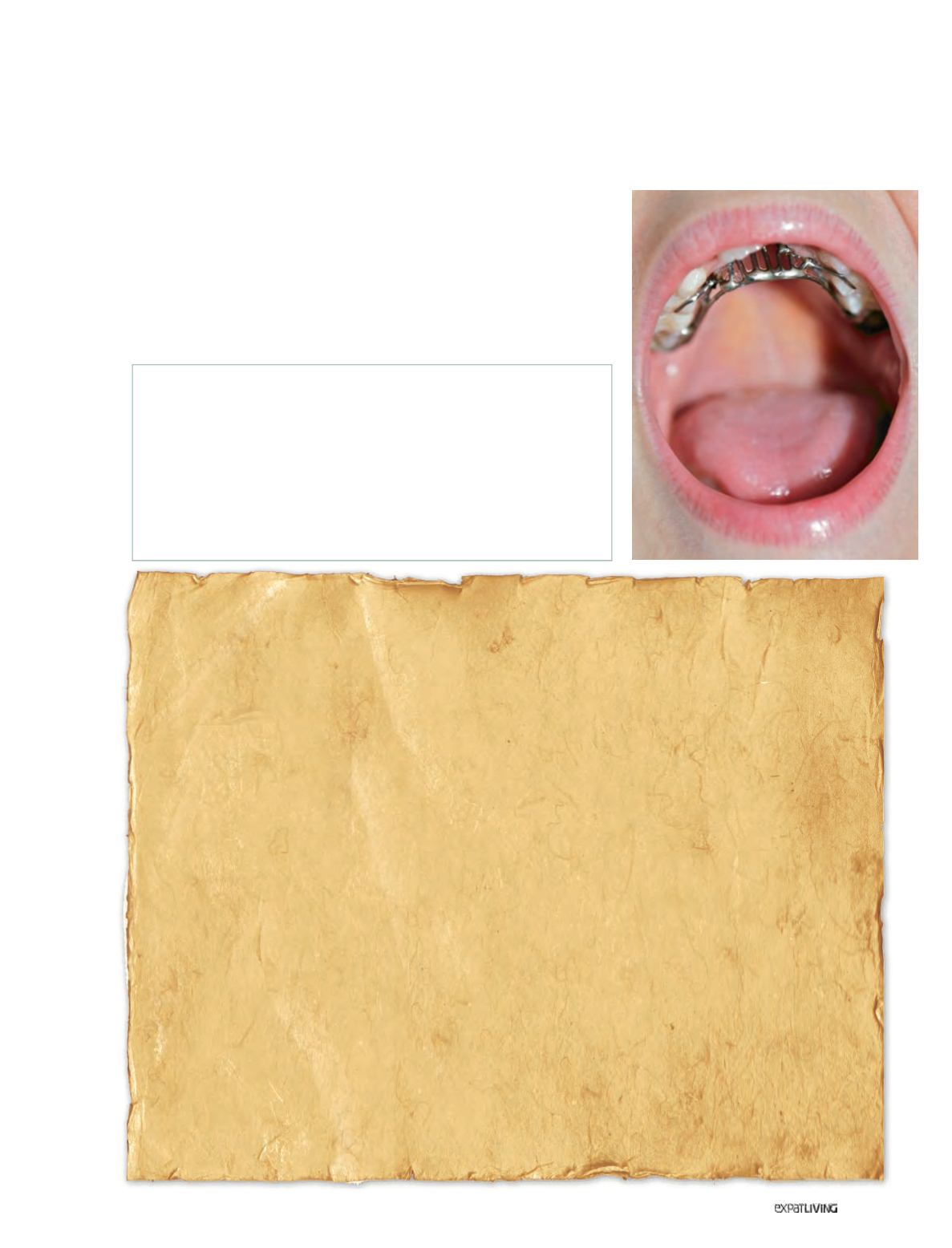

ORTHODONTICS
257
January15
Rozenn Leard | Dreamstime.com
TIMELINE:
3500-2500BC
1500BC
25BC-50CE
1728
1757
1834
Late 1800s
Early 1900s
1970s
1990s
Signs of Trouble
• Retention of baby teeth for longer than usual
• Difficulty in chewing or biting
• Breathing through the mouth
• Thumb or finger-sucking
• Crowded, misplaced or blocked teeth
• Jaws that shift or make sounds
• Biting the cheek or the roof of the mouth
• Teeth that meet abnormally
• Jaws and teeth that seem out of proportion to the rest of the face
caused by air resistance related to
allergies, asthma, adenoids or tonsils.
The problem with mouth-breathing is that
it tightens and constricts the muscles
of the lower face, causing the jaw to be
undersized. Fitting a plate can work to
expand the upper arch, which will help to
increase the size of the airway.”
In cases like this, she works with ENT
specialists, physicians andpaediatricians.
“It’s important for me to see the child as a
whole,” concludes Dr Wong. “If she’s not
sleeping well, for example, it can affect all
aspects of her growth; and that’s because
the growth hormone is released during
sleep. With all the pressures on them,
many Singaporean children don’t get
enough sleep!”
Ancient Egyptians use crude metal bands, probably held in place with catgut, to move teeth.
Greeks and Etruscans fashion bridges out of gold, and place mouth guards into the mouths
of the dead.
Roman writer Aulus Cornelius Celsus proposes using steady finger pressure over time to
push a tooth into place.
Frenchman Pierre Fauchard becomes the “Father of Orthodontia”; invents a horseshoe-
shaped metal bandeau.
Etienne Bourdet, dentist to the French king, discovers that wisdom teeth can be extracted
to prevent overcrowding; he is the first to practise expanding the arch by means of lingual
orthodontics.
Founding of the first American dental Association – the Society of Surgeon Dentists of
the City and State of New York; Americans go on to invent vulcanite, the electric drill and
anaesthesia.
• Norman W. Kingsley (1825-1913) pioneers cleft palate treatment.
• American John Nutting Farrar’s (1839-1913)
Treatise on Irregularities of the Teeth and Their
Correction
earns him the title “Father of American Orthodontics”.
• Calvin S. Case (1847-1923) argues for extraction to improve aesthetics, and does great
work on the prosthetic correction of cleft palate.
• Edward H. Angle (1855-1930) achieves the separation of orthodontics as a science distinct
from dentistry and founds the first American society of orthodontists.
The first set of “braces” appears, bands of gold or other metal wrapped individually around
teeth and connected by an adjustable wire.
Breakthrough techniques such as the use of dental adhesives to stick brackets to teeth, tie
wires and elastic ligatures, and stainless steel instead of gold or silver.
Invisible braces perfected by combining 3D technology with plastic retainers – hello Invisalign
and Clear Correct.
* From
Orthodontics in 3 Millennia
by Norman Wahl



















